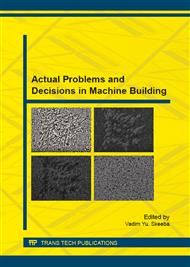p.3
p.11
p.17
p.22
p.28
p.35
p.41
p.46
Efficiency of Steel Casting Production by Aluminothermic Metal Reduction
Abstract:
Conventional recycling methods of industrial waste such as ferrous and non-ferrous chips and broken graphite are ineffective. In this paper we investigate exothermic remelting of industrial waste. Parameters of the most effective recycling conditions which result in a maximal yield of reduced metal and high efficiency of steel casting have been determined. The influence of the aluminothermic mixture density, a fraction and a granulometric composition of the mixture initial components on the metallic yield is shown in the paper. The possibilities of reducing the material content in the thermite mixture are also discussed. The most productive process of steel casting with the use of industrial waste which makes it possible to reduce the overall dimensions of casting molds and the bulk of molding materials is proposed.
Info:
Periodical:
Pages:
22-27
Citation:
Online since:
August 2015
Price:
Сopyright:
© 2015 Trans Tech Publications Ltd. All Rights Reserved
Share:
Citation:


